Video
youtube
Digital IDs during a pandemic!?
115+ interactive ubuntu digital touch IDs installed during and after a pandemic, all with an uptime of 99%. If it works, may as well make a digital white paper about it :)
A thanks to Advantech and the initiating system engineer, Jean-Pierre Jolivette.
0 notes
Link
Patent Approved! Long story short: I designed electronics and 3D printed materials that contribute to a system that allows CAS divers to safely decompress animals obtained from the mesophotic zone. A thanks to the CAS legal team for seeing this effort through!
0 notes
Photo
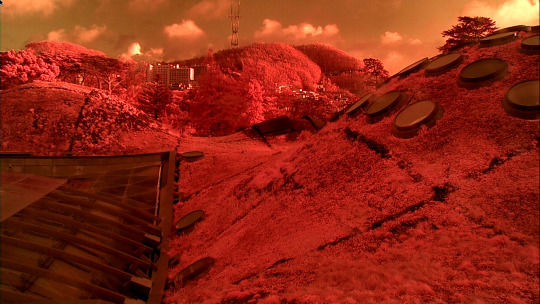
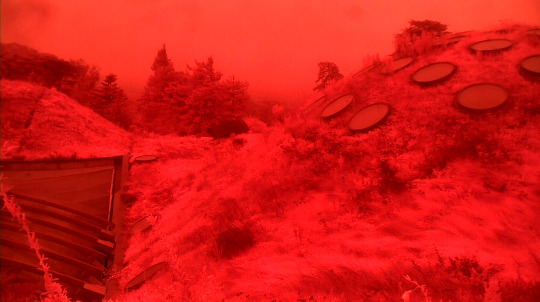
Sunny Side Up?
The top left image shows the roof cam on 2016 on a sunny “normal” day. In that image, plants are reflecting Infra Red light, indicating that they are photosynthesizing.
The photo on the right is from September 9th, 2020. The high atmosphere ash from the wildfires is acting like a cut filter (?), passing an orange-red hue. In this instance, the roofcam cmos sensor appears to be completely saturated with IR, making for a very bright red hue, and making NDVI untrustworthy here.
Just a note from the basement :)
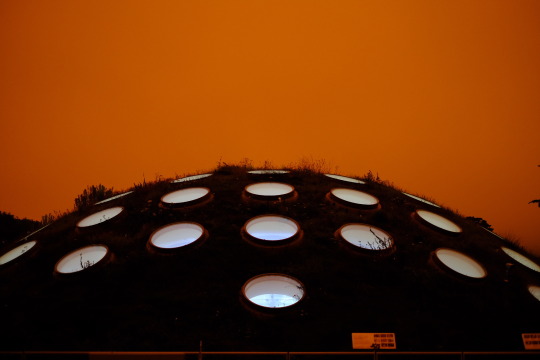
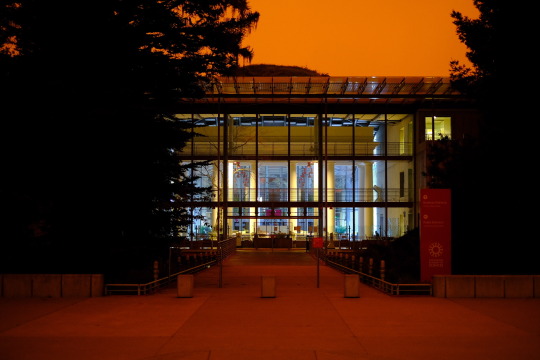

0 notes
Text
Coral love in the time of Covid-19

The shelter in place period made for one interesting project, live streaming a coral spawning event!
A researcher required a live video feed of up to 6 tanks to remotely monitor active coral spawning. The catch(s): there was no money to do any of this, it had to be done under quarantine procedures, the infrastructure wasn’t in place, the Lab was dimlit/compact, it had to be done ASAP.
Within storage was a PTZ security camera, with onboard h.264 encoding. This meant that it could endure a humid saltwater lab environment, provide views of each tank, and encode video onto the network. A few trips installing hardware and patches allowed for a network connection. One trick however, was that the camera didn’t utilize the youtube protocol of RTMP. This meant that the video would need to be live transcoded.
Enter the FFMPEG.
and this line, or something like it:
ffmpeg -rtsp_transport tcp -i rtsp://password:[email protected]/streamlocation -framerate 30 -video_size 1920x1080 -vcodec libx264 -preset superfast -maxrate 4000k -bufsize 10000k -vf "format=yuv420p" -g 60 -c:a aac -strict -2 -b:a 128k -ar 44100 -f flv rtmp://a.rtmp.youtube.com/live2/xxxx-xxxx-xxxx-xxxx -async 1 -vsync 1
A separate linux server ingested the camera’s RTSP stream, sliced it up with FFMPEG, then directed it over to youtube via RTMP protocol. The camera was then programmed via ONVIF protocols to pan and scan to each tank, and dwell for 20 seconds. This worked surprisingly well, taking advantage of the 16x optical zoom of the camera. One could clearly see in the tanks and it was live on youtube, with no perceptible frame drops.
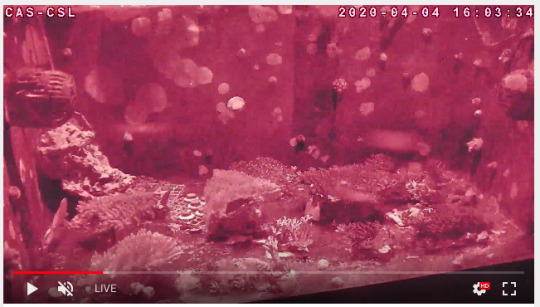
Of course, after a week, it stopped working.
On top of that, coral spawning occurs just once a year, and that date was rapidly advancing (like within days). Onsite, the camera was found caught in a loop: every time a network service was accessed, it rebooted. Even just http on port 80! This effectively bricked the system, as streaming required a network service. The power supply was swapped, the system was defaulted, and it did nothing. Trying to apply a firmware patch meant using a network service, so that failed too. And not to speak ill of the dead, but the preferred interface of this camera was Internet Explorer.
To the contingency plan!
A small IP67 camera with very low lux was also in storage. Unlike the previous camera, this was not Pan, Tilt or Zoom, nor did it natively encode video. It utilized HD-SDI. Fortunately, a spare SDI streaming encoder appliance was onsite. The PTZ was removed, and the alternate was installed, along with a NEMA box enclosing the encoder, switch + power controller.
The wide view of the fixed view camera was aimed to get the 4 most important tanks, though not a single one perfectly. It was a compromise, but one that worked.
A live broadcast of coral spawning was achieved, with the researcher even doing a live audio Q and A through social media. This last part was done via an RF beltpack combo, straight into the encoder appliance (no DSP to limit noise). This part was was even more last minute, but it was worth it
As always, this took a lot of people to get it working, including the CAS Digital Engagement team, CAS Biologists (working onsite during this pandemic) and the researcher, Dr. Rebecca Albright.
The camera still streams here as of this writing (on an inverted daylight schedule), but this may not be a “forever” install. Or rather, hopefully there will be a more permanent iteration.
0 notes
Photo

…I was a speaker at TIDE, related to working with the emerging technology of surface haptics. Thanks to Ed Colgate, Gilad Kat & David Anderson. More info here and here.
0 notes
Photo

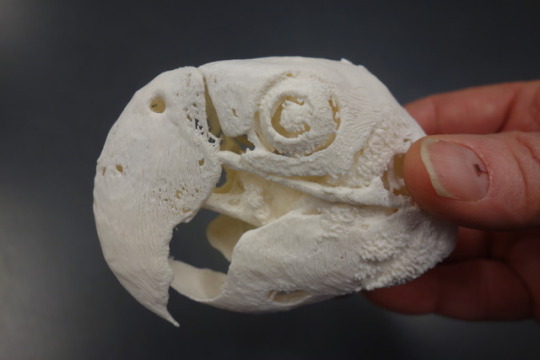
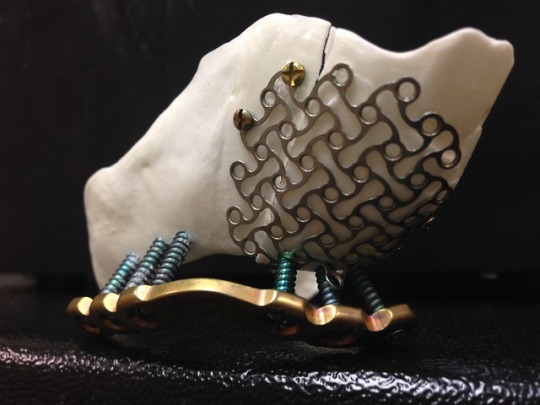
Something to wet the beak!
A Veterinarian swung by with some cool DICOM data of a Macaw skull. A colleague of his was curious if the bone could be isolated from the scan to a 3D print.
With the print in hand, the doctors were able to practice and plan their repair of the mandibular fracture on the 3D model, before doing so with the animal.
Thanks to Freeland for letting me assist on this one!
0 notes
Link
I had a role developing the electronic & 3D printed hardware which supported the technology described in this paper. Its at the very end:
“Toshiro Chang[sic: Chiang] and the California Academy of Sciences' electronics engineering team assisted with the development of several crucial aspects of the chamber design“
0 notes
Video
youtube
...how to make a fogroom.
Its not quite like Twin Peaks, but its pretty good!
The fogroom is a project which involves 144 ultrasonic transducers, 6 solenoid valves, two dedicated control boxes and good old tap water.
The draft control system was originally intended for a “rain room” project, however it was easily repurposed.
A lot of the early prototyping involved finding an easy to maintain and control fog generator system. There are a lot of commercial fog generators out there, however few seemed to be geared for our purposes. Rather than purchase a commercial set-up, we went and obtained the transducers that are commonly found within these commercial systems. Some experimentation was then done with various methods of pushing, pulling & conducting the fog. It needed to look and flow like real fog.
The test version was controlled with MAX/MSP for DMX lighting, Audio and playback.
The installed version utilized a PLC and show controller combo as something a little more robust was required for this 365 day a year attraction.
In the end, this project came together pretty well. One lesson from this one: titanium is a great metal for detecting water level :)
0 notes
Video
youtube
Shout out to Heron’s Head Park!
...or how i stopped saying quadcopter and learned to sometimes use the word drone.
Circa 2012 I went ahead and pieced together an early addition Parallax Elev8 quadcopter to “fly for fun.” It’s beefy and large and requires the Doc Brown style RC controller-- something I hadn’t used since my Tamiya Truck days. The device has a 2lb+ payload and is completely customizable. I added a FPV/GPS/HUD wireless rig and a go-pro knock off. If you like soldering, cable harnessing, piecing together discrepant documentation and complete control, this rig is for you. The entire process of assembly, configuration and successfully flight is for the hands-on “hard-way” learner.
I crashed it a lot. So, I thought I ought try with something simpler. A small Blade quadcopter. I crashed this one a lot too, but it worked with the DX6 radio I already had, was made for abuse, and could be used indoors. Mostly, this one taught me how to better configure and fly a sUAV. It has a nifty USB charger for its batteries. But, its true enemy is cat hair, which likely pleases the cat.
As time progressed, the quadcopter/drone market was really developing in some very nifty ways. DJI released the MP1, and out of the box it worked very, very well.
tl;dr
I wouldn’t trade the time spent on homebrewing a device, but that time gave me a true appreciation for the MP1 capabilities (especially for the form factor).
Anyhow, that’s how the video was made :)
0 notes
Photo

DiveComm
“not the old, not the new, just the necessary”
This control panel allows for underwater communication with an aquarium diver, through an electrically isolated diver umbilical. It can support two simultaneous divers and two simultaneous tenders, all of whom can hear presenter speech from the theatre. The panel also features a wireless intercom, which allows for the dive tender(s) to freely roam top side while maintaining duplex comms with the diver(s). The tender(s) can maintain private communication with the diver, then press a wireless button, or panel button, allowing the Diver to be heard in the aquarium theatre. Lastly, there is a monitor speaker built within the panel, for confidence :)
Multiple Digital Signal Processors are deployed within a gigabit fiber network. These DSPs help reduce the inhale, exhale and bubble noise from the underwater diver. Analog audio is then integrated within the existing architectural audio system, where it is fed to the theatre and even online.
The wireless Intercom system is a beast-- itself being a niche product with few companies for real competition. Our previous system utilized a wireless beltpack which “called home” for programming on start-up. This made adjusting the programming easy, however it was not an entry-level procedure which anyone could easily do. Additionally the old beltpacks would do fun things like set master volume to -100, without any feedback! But that’s another story...
The new beltpacks are quick to deploy and have simple interfaces. Likewise the panel has one single connection for the divers to make. Previously there were two connections, and they were both clumsy twist lock connectors. Now, instead of diver comms going wireless, they go straight into the system via hardlined banana jacks.
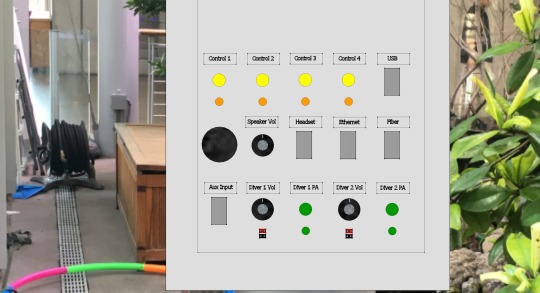
...an early drawing of the planned panel. How do you fit an AV rack in that!?
The main post-install problem involved troubleshooting software. On the DSP side, it turned out that the permissions to certain files were poorly administered by the system itself. This meant that the system had trouble remembering its settings(!), and resulted in much embarrassment when the panel failed during a training(!!). Aware of this issue, it was quickly resolved with assistance from the manufacturer.
It’s been a pleasure to see the project go from scratch design to fully fabricated, installed and programmed. A team worked together to make this project and the list of install constrains was numerous: no space, no hvac, no power, no fiber, no downtime, no free RF slots, zero “ugly” allowed.
Overall this new system is simpler to use, sounds good, and has less points of failure. Time will tell as to reliability :)
Also a shout out to Jeff Christiansen from the Seattle Aquarium, who talked shoppe with me, and the in-house CAS dive team for their trust and patience!
0 notes
Video
youtube
Playing in the Fog
...figuring out all the ways to generate and control fog :)
0 notes
Photo
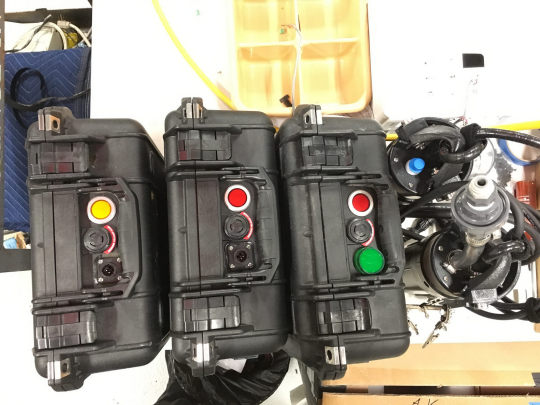
Decompression Chamber Power Supplies
These weather sealed units go around the world to support mesophotic zone specimen research. They provide clean, reliable, uninterruptible power, in all situations, to the pumps which keep the specimens under pressure.
Thanks to Matt Wandell for bringing me onto the project.
0 notes
Photo

Makin’ Sensors :)
These are designed to give RGB led feedback for proximity detected through 1/2″ of tempered glass. They utilize an Attiny85 and neopixel to get the job done. This was a small OSH board order so they’re getting built onsite via toaster and hot air rework station.
0 notes
Text
Bioluminescence Wall
youtube
An energy efficient LED “Bioluminescence Wall” that delivers an abstracted twilight experience. The programming mimics the ethereal discharge of light by displaced dinoflagellates. Users are encouraged to “glide” their hands across the glass, resulting in trails of simulated bioluminescent glow. This is a common experience for people who dive in areas/times devoid of light.
Several design considerations had to be considered to preserve signal integrity on these large, two layer Printed Circuit Boards--especially when each proximity zone is essentially an RF burst antenna, and each LED susceptible to EMI. Optimal trace length, spacing, antenna size, power and data line placement were critical factors to success. 25 PCBs were used to cover the 9′x6′ steel framed glass wall.
Each LED has its own proximity zone, which senses through 1/2″ of tempered glass. Proximity data is handled via multiple shift registers and piped into an 80mhz Microcontroller (one per board). The MCU then correlates the zone data to LED state. LED output communication is done via the same MCU through Pulse Width Modulation and shifted through the LEDs. There are 140 8-bit LEDs per board, for a total of 3,500 RGB LEDs. A single board pushes around 1 Megabyte Per Second of Data. The wall moves about 25 MBPS of data. Response time is around 800hz, but only if the hand makes firm contact with the glass. In a way, the wall live records user movement and plays it back; one gets to watch what his/her movements replay. The only limit to the number of users is how many people can touch the glass.
According to researchers and divers, simply having an led flicker would be incorrect. The LEDs were required to pulse, pop and fade in a variety of ways. There are over 50 different ways in which it the LEDs can trigger and persist. There’s just enough time to say, make a large symbol like a heart, but not enough to write a name.
The interactive “sleeps” at night via automation and wakes in the morning. Due to changes in the environment (stray RF, temperature) the interactive calibrates itself throughout the day.
Accompanying the interactive is an explanatory video, further explaining what Bioluminescence is.
The electronic aspects of this exhibit were a pleasure to work on, but of course, that’s only one part of the interactive. Many people worked together to craft the experience.
Mounting boards to panel:
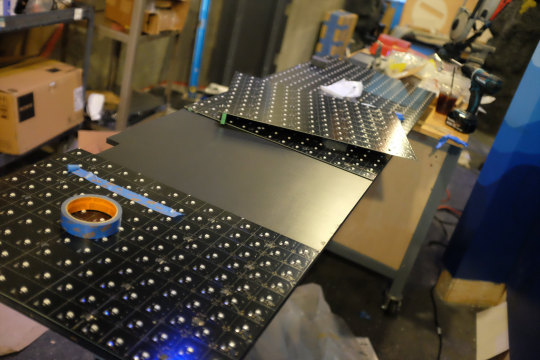

Troubleshooting:
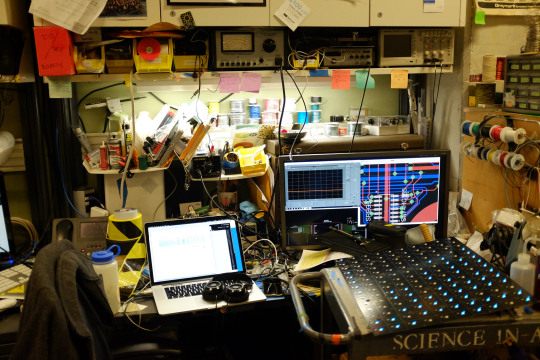
Kinda hard to document this in the low light conditions of the exhibit :)
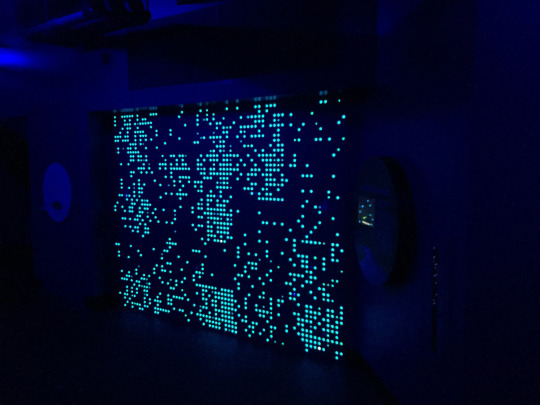
0 notes
Video
Fountain at Modesto Junior College Science Center
This Sundance Water Designs water feature has 7 pop-up jets and over 20 Laminar arc jets. Three programs were created via Midi keyboard, MAX/msp and Reaper in one day. The specific program is selected by windspeed through an anemometer! The accompanying Great Valley Science center is also now open :)
0 notes
Video
Mini Two Axis Earthquake Simulator
This was a little demonstration unit which ended up at a few events. Its a pneumatic single person earthquake simulator with a 1k hz frequency capability. The airbags (tire lookin’ things) expand and contract to move the dolly. Friction between airbag and dolly was handled with teflon stripping. Air was delivered via a compressor and controlled by 8 solenoid valves.
At one point, students were able to program it in Ruby. It wasn’t much to look at, but it was a fun ride! This appeared at the 2014 Robot Block Party
0 notes

